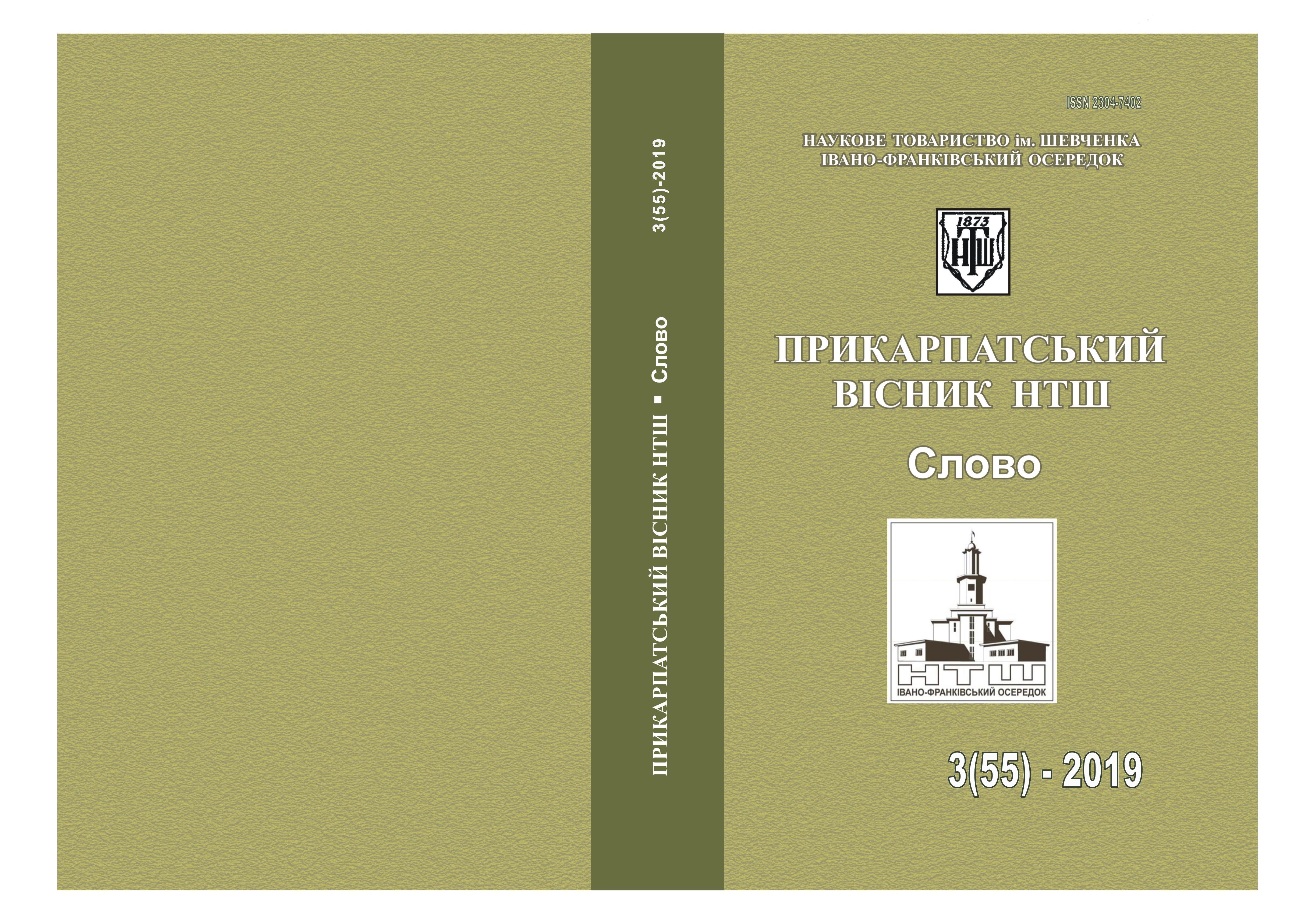THE COMPOUND NOUN-NEOLOGISMS AND THE SYNERGETICS OF THEIR SEMANTIC DECODING IN THE GERMAN-LANGUAGE PRESS
DOI:
https://doi.org/10.31471/2304-7402-2019-3(55)-45-54Keywords:
compound noun-neologism, transformation of the neologism, decoding of the semantic volume of a noun, main/derived/monosemic nomination, human mental lexicon, principle of least effort, self-organizing, self-regulating, synergetic circle order – chaos – order.Abstract
The article focuses on the interaction of syntagmatic, semantic and paradigmatic factors in the generation of noun content with the compound noun-neologisms, realized in the German-language press-texts, and their transformed semantic decoding as the main, derived and monosemic nomination according to the linguosynergetic scientific approach. This approach treats the language as a complex and dynamic system capable of self-organizing and self-regulating by selecting the most optimal and most comfortable elements of speech tools to the language treasury. Methodologically important in the article is the position that the synergetic law of the least effort is the driving factor in language development. In synergetic terms the author of this article draw parallels between the vocabulary as a representative of the linguistic generalization of the structured amount of knowledge of the learned extra-linguistic reality and mental lexicon, which is not an arbitrary accumulation of inputs, but forms a structured hierarchical system of such inputs. If, in synergetic terms, lexical units and their meanings at the language level contain encoded structured information, then in the same way in the thesis the implementation of the word in one of its meanings at the speech level is considered as information decoding.
In relation to the noun, the synergetic mechanism of least effort in the process of generating noun-information speech content implies that the human mental lexicon is directed at decoding the optimal volume of the realized semantic potential of the compound noun-neologisms. Decoding of the noun semantics on the basis of the synergetic-quantitative approach of the research is interpreted as the process for establishing semantic features of the implemented noun nominations. The study gives the possibility to analyze of the synchronic level the results of the self-regulating and formation of the compound noun-neologisms in the synergetic cycle order-chaos-order thus enriching the German linguistics with the topical knowledge about the paradigmatic-syntagmatic models of the German language noun vocabulary. The proposed methodology of the research will serve as a useful aid in the lexicographic practice as well, since the proposed method of the semantic decoding of vocabulary information in the speech context should minimize possible subjectivity in the process of delimiting word meanings, show changes and replenishment of the word-stock, which will help to optimize the compiling of both explanatory and translation dictionaries of the German language.
References
Генералова Л.К. К вопросу о структуре значений имен существительных. Сборник научных трудов Московского педагогического института. 1973. №71. С. 43–50.
Герман И.А. Лингвосинергетика. Барнаул: Издательство Алтайской академии экономики и права, 2000.
Колмогорова А.В. Языковое значение как синергетическая система. Научное мнение. 2012. №9. С. 61–67.
Ольшанский И.Г., Скиба В.П. Лексическая полисемия в системе языка и тексте. Кишинев: Штиинца, 1987.
Хакен Г. Синергетика: Иерархия неустойчивости в самоорганизующихся системах и устройствах. Москва: Мир, 1985.
Fleischer W. Kommunikativ-pragmatische Aspekte der Wortbildung. Sprache und Pragmatik: Lunder germanistische Forschungen. 1979. №48. S. 317–329.
Laddissow A. Konnotation in der nominalen Wortbildung der deutschen Gegenwartssprache. Entwicklungen der Wortbildung der deutschen Gegen-wartssprache. Reihe A (105). 1983. S. 21–48.
Maineke E. Das Substantiv in der deutschen Gegenwartssprache. Heidel-berg: Universitätsverlag WINTER, 1996.
Polenz P. Deutsche Satzsemantik. Berlin–New York: Walter de Gryeter, 2012.
Schwarz M. Einführung in die Kognitive Linguistik.Tübingen und Basel: Francke Verlag, 1996.
Serebrennikow B.A. Allgemeine Sprachwissenschaft: Die innere Struktur der Sprache: in drei Bänden. Bd. II. München–Salzburg, 1975.
Zipf G.K. Human behavior and the principle of least effort. Cambridge: Addison–Wesley, 1949.
Die einzige bekennende Romni im EU–Parlament. URL: http://www.stern.de/politik/ausland/sterngespraech-mit-livia-jaroka-die-einzige-bekennende-romni-im-eu-parlament-2103578.html.
Die NS–Geschichte der Akademie der Wissenschaften. URL: http://www.profil.at/articles/1306/560/352237/die-ns-geschichte-akademie-wissenschaften.
Digitales Wörterbuch der deutschen Gegenwartssprache. URL: http://www.dwds.de/.
Duden. Deutsches Universalwörterbuch.Оn CD. Mannheim: Dudenverlag, 2003. 1 електрон. опт.диск (CD–ROM): кольор.; 12 см. Систем. вимоги: Pentium; 128 Mb RAM; Windows 2000, XP; MS Word 2000. Назва з титул. екрану.
Kampf gegen Islamisten: Britische Armee in Alarmbereitschaft für Mali–Einsatz.URL: http://www.spiegel.de/politik/ausland/britische-soldatenste-hen-fuer-mali-einsatz-bereit-a-878912.html.
Wahrig Digital. Deutsches Wörterbuch [Електронний ресурс]. Оn CD. Gütersloh: Wissen Media Verlag, 2007.1 електрон. опт. диск (CD–ROM): кольор.; 12 см. Систем. вимоги: Pentium; 256 Mb RAM; Windows 2000, XP, Vista; MS Word 2003. Назва з титул. екрану.

